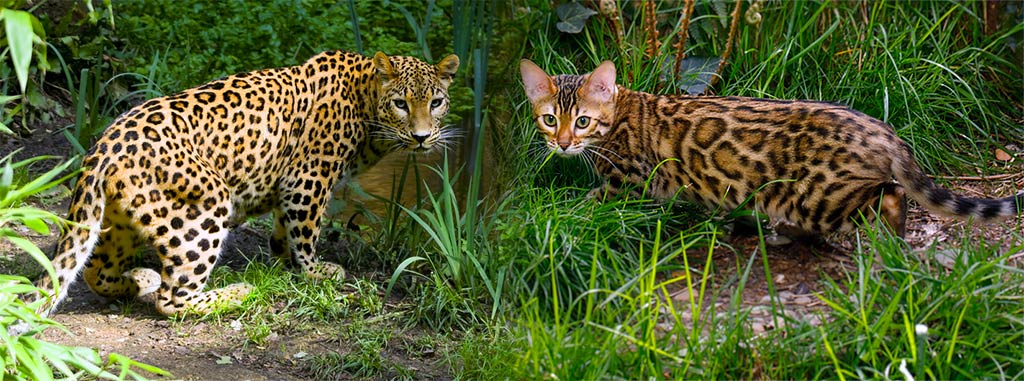
A Deep Dive into Bengal Cat Coat Colors and Patterns - Unraveling the Beauty
Share
The Bengal cat is a breed celebrated for its stunning coat that exudes an exotic and wild allure. In this blog, PAWTOPIA BENGAL will embark on a fascinating journey into the realm of Bengal cat coats, exploring the rich array of colors and intricate patterns that make these felines truly extraordinary.
COLORS OF THE WILD
Bengal cats come in a variety of captivating colors, each contributing to the breed's unique charm.
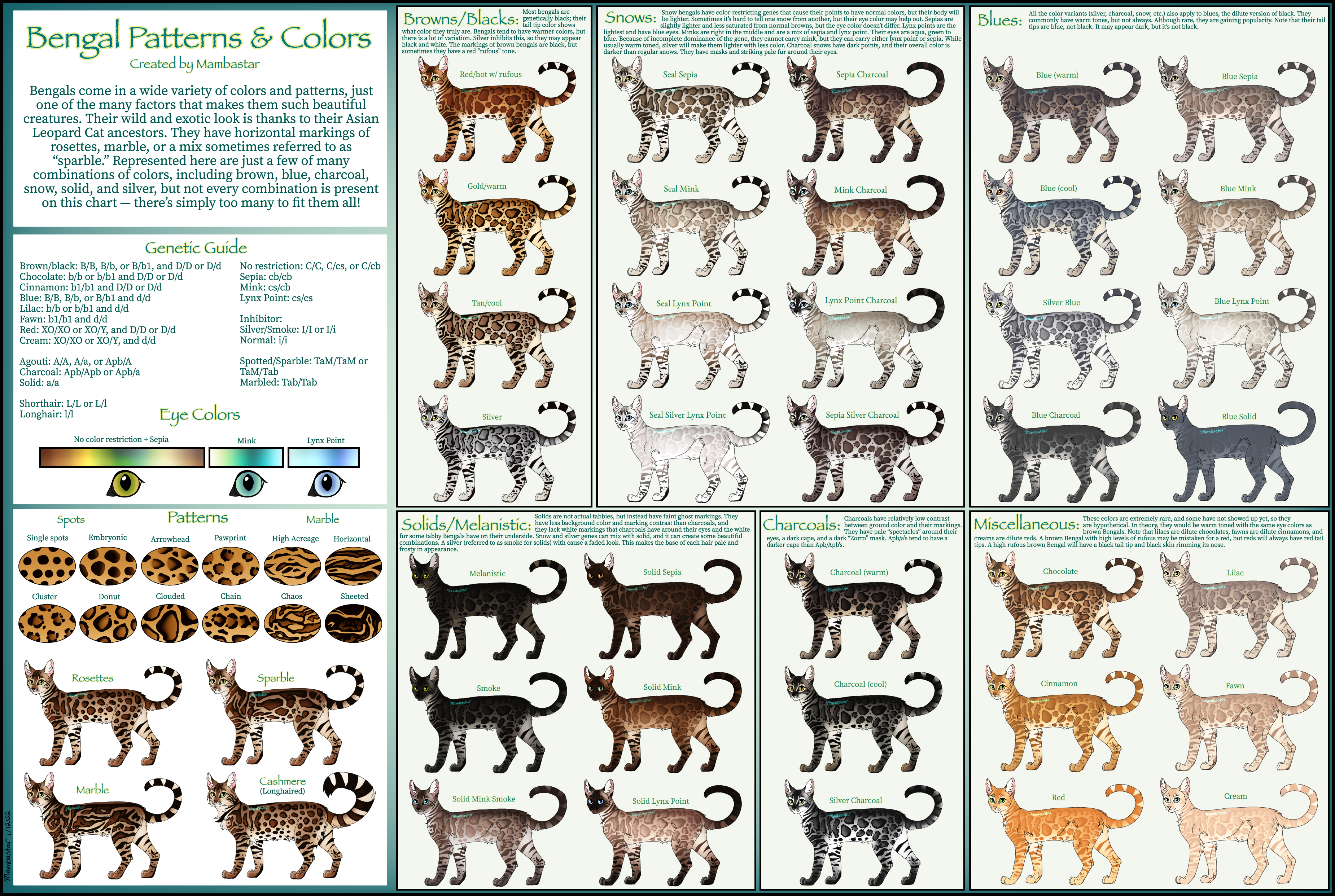
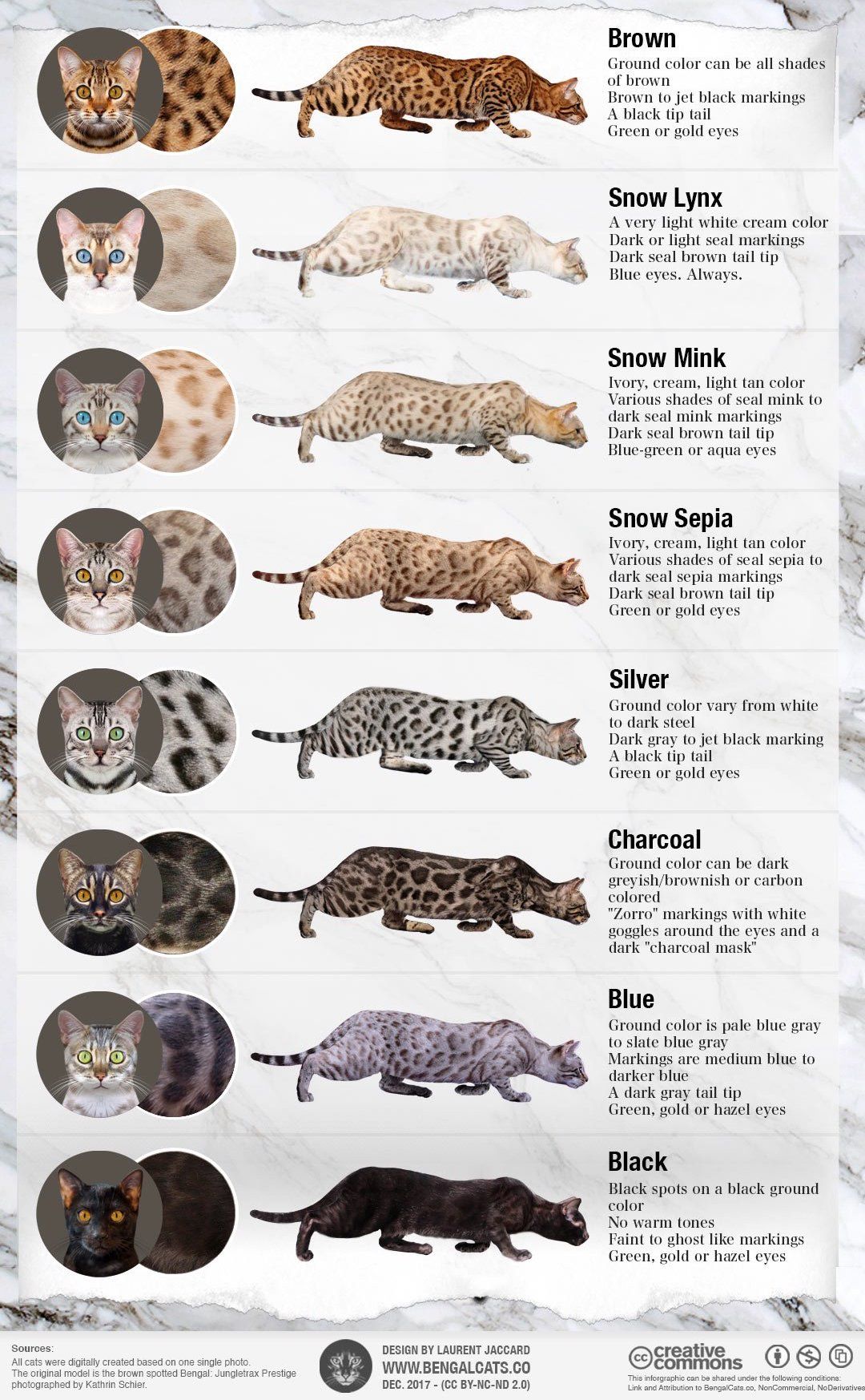
Brown Bengals:
The classic brown coat of Bengals is reminiscent of their wild ancestors. Ranging from warm and golden shades to darker, more intense browns, these cats carry a touch of the jungle in their appearance.

The brown Bengal cat (C,C color genes) is the most popular of the Bengal cat colors and it was also the first to be recognized by TICA in 1983.
The traditional brown colored Bengals have green or gold eyes.
The ground color can range from a gray-tawny tone to a vivid orange-gold.
The spotting, rosetting or marbling color can range from black, light brown to a darker or reddish brown.
If you have a brown furry friend, you probably know that brown come in a variety of shades like: Golden, Cream, Tawny, Honey, Taupe, Tan, Beige, Caramel, Cinnamon.
All shades of brown are accepted but an orange-brown is preferred for ground color.
As you can see, there’s virtually every shade of brown available for the Bengal breed.
Now, with a brown Bengal, you can find these characteristics:
- Brown to jet black markings
- A black tip tail
- Red nose
- Brown, copper, gold, green or hazel eyes
- A white belly is preferred
Snow Bengals:
Looking for a mini snow leopard? Then this is the cat you’re looking for.
The snow-colored Bengals are a result of the combination of the Siamese color-point gene with the Bengal gene pool. They come in three variations: Seal Lynx Point, Seal Mink, and Seal Sepia. Each exhibits a distinct level of contrast between their body color and their darker points.
Contrary to what the name suggests, they are not pure white Bengal cats.
In fact, the snow Bengal comes in 3 genetically different colors (and names):
- Seal Lynx
- Seal Mink
- Seal Sepia
It can be tricky to tell the difference between the three seal colors. A genetic test is always the best method to differentiate the 3 snow Bengals. Alternatively, eye colors can help determine the snow Bengal color one has.

A Snow Seal Lynx Bengal (Cs, Cs color genes) has:
- A very light white cream color
- Dark or light seal markings
- Dark seal brown tail tip
- Blue eyes. Always.

A Snow Seal Mink Bengal (Cb,Cs color genes) has:
- Ivory, cream, light tan color
- Various shades of seal mink to dark seal mink markings
- Dark seal brown tail tip
- Blue-green or aqua eyes

A Snow Seal Sepia Bengal (Cb, Cb color genes) has:
- Ivory, cream, light tan color
- Various shades of seal sepia to dark seal sepia markings
- Dark seal brown tail tip
- Green or gold eyes
Not too bad, right? Shouldn’t be too hard to determine what color Bengal you’re after.
Silver Bengals:
Silver Bengals boast a coat with a silvery-white background adorned with contrasting dark spots or marbling. The silver gene creates a mesmerizing sheen, giving these cats an ethereal and regal presence.

Silver (I, i or I,I inhibitor genes) is more a lack of color. This gene inhibits any warm colors and gives an almost white base coat contrasted with striking dark markings.
The silver color was added to TICA championship in 2004 for the Bengal breed.
Silver Bengal cats come in different shades with backgrounds varying from white to a very dark steel color.
Silvers can also be found in any other color combination: Silver Snow, Silver Charcoal, Blue Silver, etc…
A silver Bengal also has:
- As little tarnish (yellow/rusty brown) in the coat as possible
- Dark gray to jet black markings
- A black tip tail
- A brick red nose
- Green or golden eyes
Charcoal Bengals:

A charcoal Bengal (Apb, a or Apb,Apb agouti genes) is darker than the traditional recognized Bengal colors. The black smoky charcoal color was particularly seen in early generation F1 and F2 Bengals.
The charcoal trait is inherited independently of color and can be seen in each color class: browns, silvers, snows (lynx charcoal, mink charcoal, sepia charcoal) and even in blues.

Charcoals have a dark greyish/brownish or carbon colored backgrounds with very little to no rufous (reddish-brown) and a very dark spotted or marbled pattern.
Charcoals can also have a darker face “mask” and thick dorsal stripe, commonly referred to as the “Zorro cape and mask”.
The mask resembles an upside-down “Y” or a peace sign without the circle around it.
These charcoal masks can be very dark and eventually match the color of the black to black body markings.
The tail is dark brown/black or grayish black with stripes and a black tip
Charcoal browns and charcoal silvers can have a black body with “ghost” markings. They can be confused with solid color bengals. A solid “pointed” cat will have solid color on the face. Solid black bengals are called “melanistics” and solid silvers are called “silver smoke”.
Blue Bengals:

The blue color (d,d dilute genes) is very rare but some breeders are working hard to try and promote the blue Bengal to championship status.
Blue Bengal cats have a powder blue/grey coat with some cream tones. The spotted or marbled pattern is a dark blue or metal grey color.
As it is a reccessive gene, both parents must carry for blue in order to produce a blue Bengal cat.
Blue Bengals also have:
- A steely blue ground color
- Peachy undertones
- Blue markings that will never turn black
- A dark gray tail tip
- Gold, green or hazel eyes
Black (Melanistic) Bengals:

Solid black Bengals (a,a agouti genes) have black patterns on a black ground color that remind us of the melanistic color variant of leopards and jaguars: the black panther.
The colors of the background and the pattern are the same on a melanistic Bengal. Their patterns are called “ghost markings” or “ghost spots” because they are barely visible. But you can still see the pattern in daylight like you would on a black panther.
Black colored Bengals are rare and less popular amongst breeders because this color variation is not approved by the associations.
As for the spots, they can be faint dark brown to black and can sometimes only be seen in natural sunlight.
A smoke Bengal is the silver variation of a melanistic.
If you’re looking for a mini black panther, this color of Bengal would be your best bet!
PATINA & TICKING
Patina and ticking are two separate features that a Bengal cat might have and they affect directly to the clearity of the pattern of a bengal cats coat. Essentially, the fur isn’t as bold on these cats.
Patina refers to dark tipped hairs that drape across the coat, blurring the pattern of your cat. The shoulders and along the spine are frequently affected more severely, giving the cat the appearance of a black overlay covering it.
Ticking happens when the whole hair shaft is a darker colour than the surrounding area. Ticking has an influence on the entire body since it removes contrast between the pattern and the backdrop. This is caused by multi-colored hair shafts giving the fur a sort of “faded” look. This trait is undesirable in show. The last tabby pattern, ticked, is in fact an absence of any pattern: all the hairs are agouti on the body of ticket tabby cats. This means that there are no distinct dark-colored markings on the cat's body. This can give a salt-and-pepper effect to the coat.
Patina:

Ticking:


PATTERNS OF ELEGANCE
Beyond their enchanting colors, Bengal cats are renowned for their distinctive coat patterns, which contribute to their wild appearance.
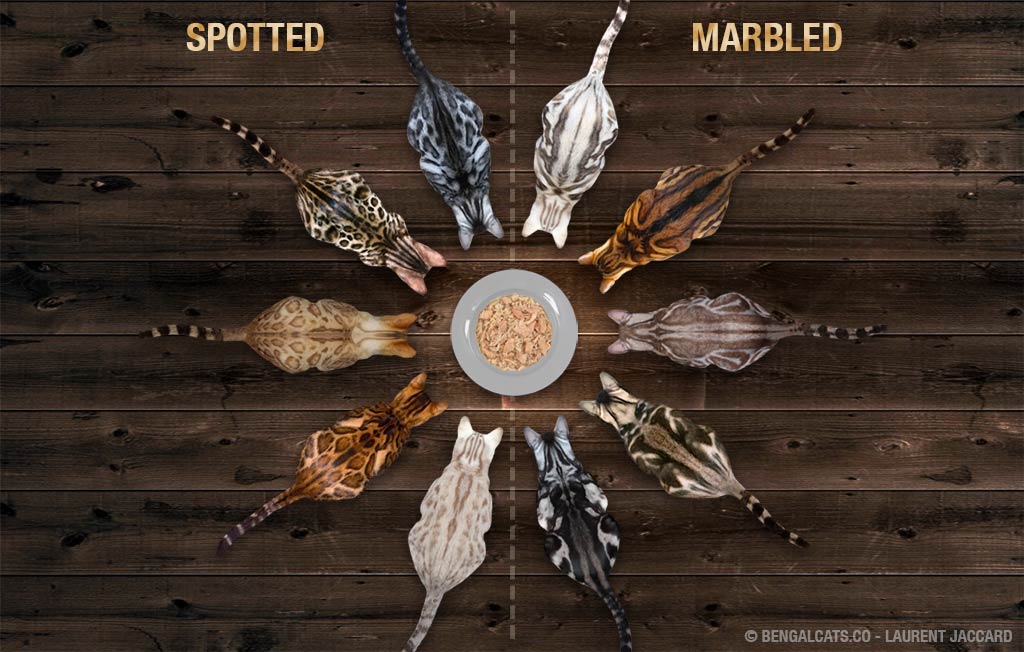
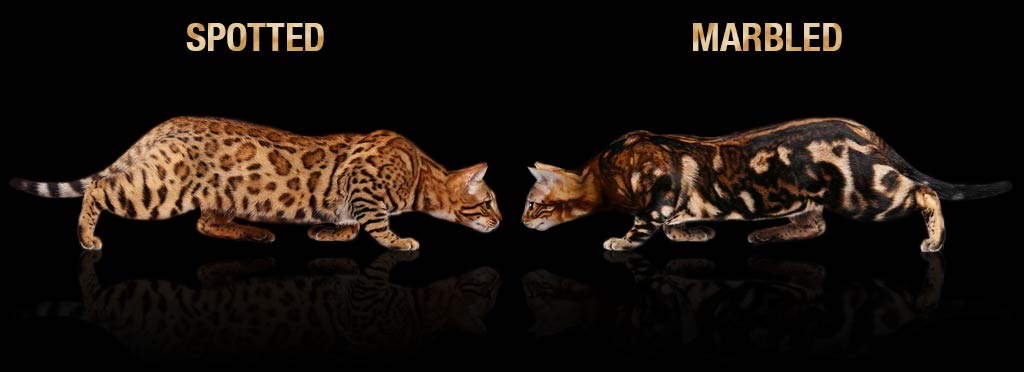

Spotted Bengals:
Single-Spotted means the spots are monochrome. It’s just solid spots splattered in droplets on a contrasting background, similar to those of wild cat like Cheetahs or non-hybrid spotted cats (Ocicat, Egyptian Mau, Spotted Shorthair or Australian Mist).
The most popular spotted coat for a Bengal cat is the
Rosetted Bengal:
Spots are called rosettes when the spots are two-toned contrasting colors distinct from the background color. The Bengal cat is the only domestic cat with rosetted spots!
These spots can vary in shape and size, creating a visually striking and dynamic pattern that closely resembles that of the leopard. Spots should NOT run together to form vertical bars.
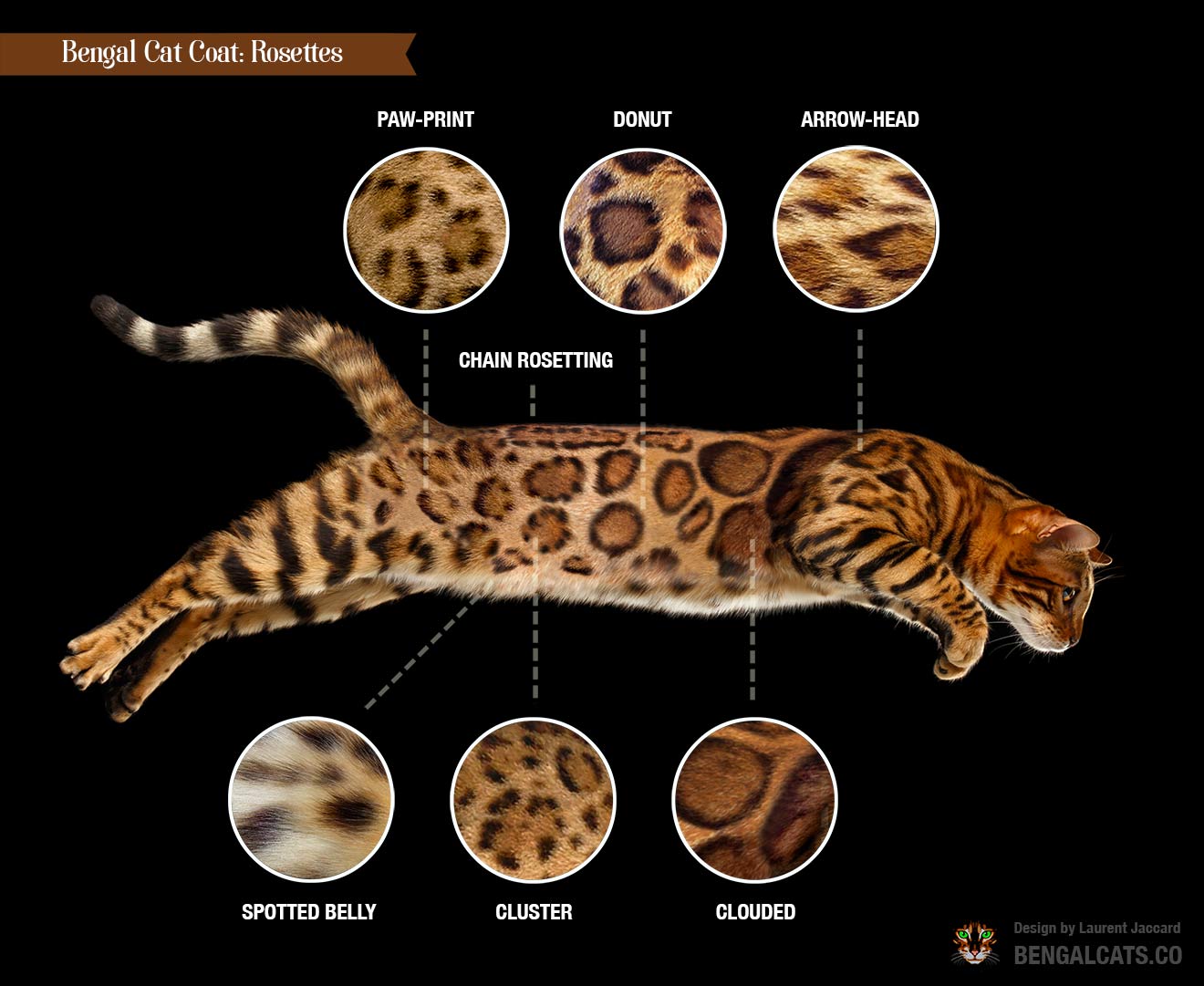




Marbled Bengals:
Marbled Bengals, on the other hand, exhibit a unique swirling pattern that gives the illusion of marble stone. The marbling can vary from fine and intricate to bold and dramatic, adding a touch of mystery to these already captivating cats.


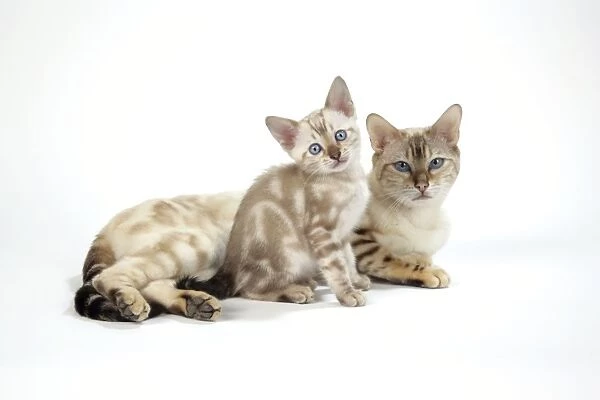
Bonus: The Sparbled Coat

Enter the sparble pattern – where spots and marble collide. “Sparbling” isn’t really an official pattern category but in breeder lingo, it is used to describe Bengals who possess both rosettes and marble markings or spotted bengals with marble-ish patterns!
The sparble is considered a spotted/rosetted Bengal and not a marbled.
GLITTER
A pronounced "glitter" appearance over the Bengal's fur is a distinguishing feature. As a result, each hair seems to be tipped with gold dust. Take a look at how glossy this boy's coat is. This is due to the fact that he is heavily jewelled. Close inspection exposes the sheen of light refracting in the hallow, transparent tips of each hair shaft. This result is extremely desirable, although it does not exist in all Bengals.
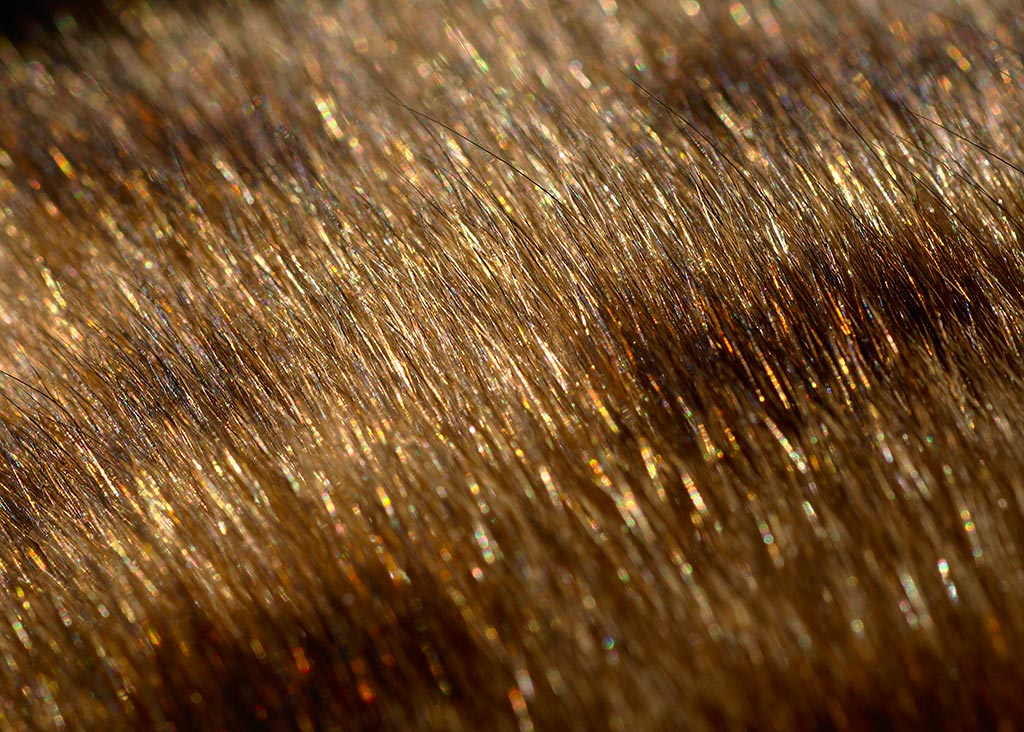
A snow bengal's "glitter" is a creamy white colour. Silver Bengals are covered with silvery white glitter. There is another form of glitter that just reflects in the hair's tip. Light bouncing off a small reflective material lodged in the tip of the hair causes this form of glitter. Cats with heavily glittering coats have cleaner coats, which are also extremely desirable.
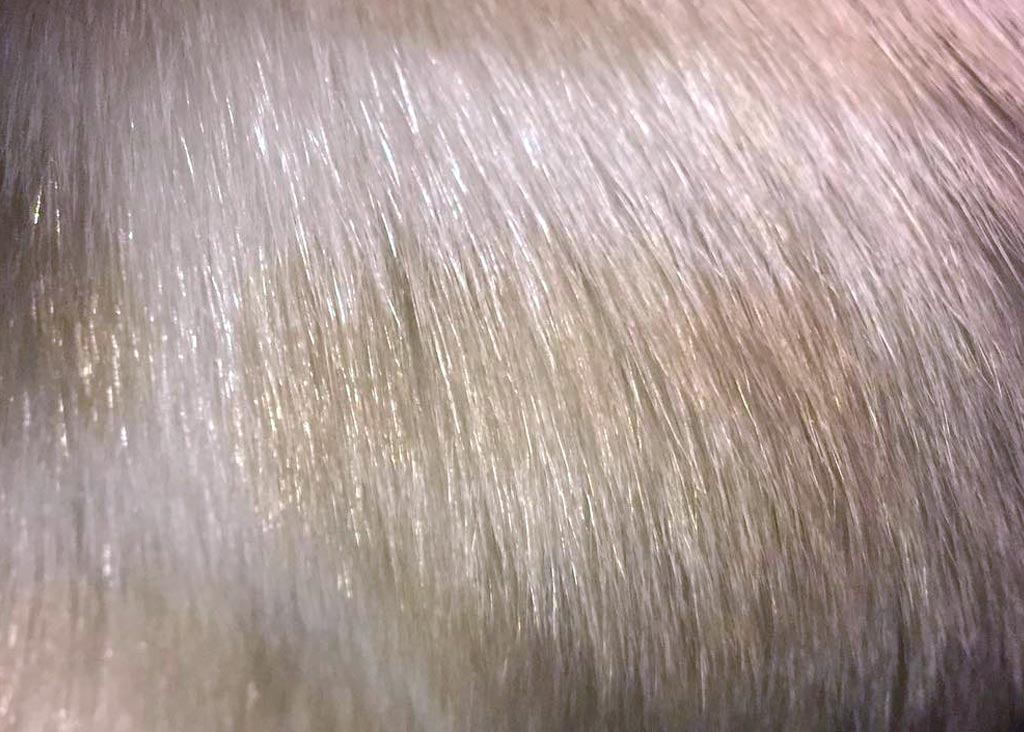
The Genetics Behind the Coat
Understanding the genetics behind Bengal cat coat colors and patterns adds another layer of fascination to the breed. The interaction of various genes, including agouti, inhibitor, and spotted/rosetted genes, determines the final appearance of a Bengal cat's coat. Responsible breeders carefully select and pair cats through DNA test and Punnett Square to achieve specific colorations and patterns, ensuring the preservation of the breed's unique aesthetics.
Did you know? The Bengal Kitten Fuzzie Stage
Bengal kittens go through what is known as the "ugly duckling" period, in which they acquire "fuzzies," which make the fur less contrasted and can obscure real colour. This early "fuzzy" coat is a direct inheritance from his wild ancestors, giving natural predator protection if they are born in the wild. This should be considered while choosing a kitten because the genuine colour and pattern are not as obvious as they would be as an adult.
To learn more about Fuzzie Stage of Bengal Kitten, you can read here:
(link)
In conclusion, the Bengal cat's coat is a work of art, showcasing a harmonious blend of colors and patterns inspired by the wild. Whether you are captivated by the bold spots of a brown Bengal or the ethereal beauty of a silver coat, one cannot help but appreciate the unique charm these felines bring to our homes. The careful interplay of genetics and the resulting visual symphony make Bengal cats a true marvel in the world of feline enthusiasts.
Feel free to reach out to us if you have any questions on adopting one of our most beautiful Bengal kittens.
- Pawtopia Bengal Cat Breeder in Ontario, Canada.
